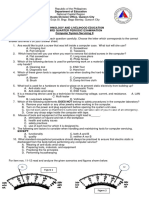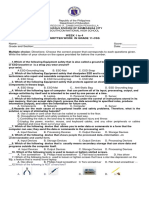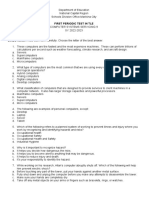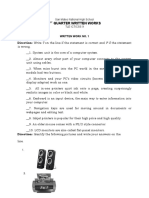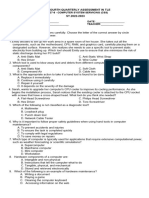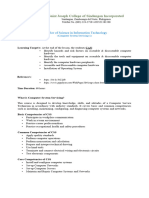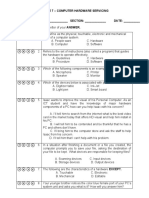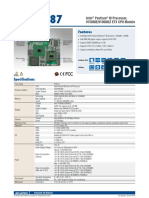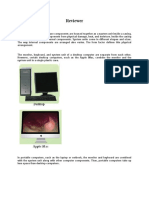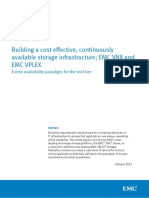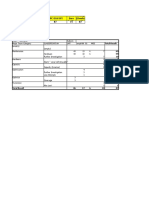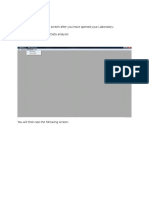0% found this document useful (0 votes)
122 views8 pagesAnswer Key Tle 10 2nd Quarter
The document is a second periodical test for Technology and Livelihood Education 10-CSS at Hermenegilda F. Gloria Memorial High School, focusing on workplace safety and computer assembly. It includes multiple-choice questions covering topics such as physical hazards, personal protective equipment, and proper procedures for disassembling and assembling computer components. The test aims to assess students' understanding of occupational health and safety as well as technical skills related to technology and livelihood education.
Uploaded by
maryjoygrciaCopyright
© © All Rights Reserved
We take content rights seriously. If you suspect this is your content, claim it here.
Available Formats
Download as DOCX, PDF, TXT or read online on Scribd
0% found this document useful (0 votes)
122 views8 pagesAnswer Key Tle 10 2nd Quarter
The document is a second periodical test for Technology and Livelihood Education 10-CSS at Hermenegilda F. Gloria Memorial High School, focusing on workplace safety and computer assembly. It includes multiple-choice questions covering topics such as physical hazards, personal protective equipment, and proper procedures for disassembling and assembling computer components. The test aims to assess students' understanding of occupational health and safety as well as technical skills related to technology and livelihood education.
Uploaded by
maryjoygrciaCopyright
© © All Rights Reserved
We take content rights seriously. If you suspect this is your content, claim it here.
Available Formats
Download as DOCX, PDF, TXT or read online on Scribd
/ 8









